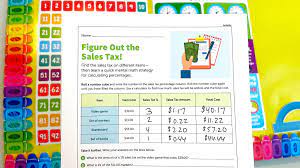Introduction:
Mathematics is not just about numbers and equations—it’s an essential life skill that helps us navigate the world around us. By incorporating real-world math and money activities into classroom lessons, educators can engage students in the K—8 age group and make learning a fun adventure. This article explores some practical yet enjoyable math activities that demonstrate the relevance and importance of mathematical concepts in our everyday lives.
1. Grocery Store Fun
One of the most relatable real-world math scenarios is grocery shopping. Teachers can set up a mini grocery store in the classroom, complete with play food, price tags, shopping baskets, and pretend money. Students can then take turns playing the roles of shopper and cashier, practicing addition and subtraction as they calculate the cost of their purchases and give change.
2. Lemonade Stand Economics
A lemonade stand is the quintessential symbol of childhood entrepreneurship, and it offers valuable lessons in economics, budgeting, and profit calculation for young learners. In this activity, students work together to create a basic business plan for a mock lemonade stand. They’ll determine costs for supplies—such as lemons, sugar, cups—and set prices to turn a profit. Through this hands-on exercise, students learn about revenue, expenses, pricing strategies, and financial responsibility.
3. Bank on It
Teaching children about banking concepts such as saving, interest rates, and account management is crucial for their long-term financial literacy. Teachers can assign roles of bankers and customers as children create practice accounts using pretend currency. Students learn to deposit money, withdraw funds responsibly, calculate interest earned over time, and monitor their account balances.
4. Measure Me Up
Incorporating distance measurement in real-life situations engages young learners in spatial awareness and problem-solving skills. Invite students to use measuring tapes or non-standard units like blocks or paper clips to measure various items and distances in their classroom or school. This activity reinforces concepts like length, width, and perimeter while allowing kids to observe mathematical concepts outside of textbooks.
5. Time is Money
Time management is a crucial life skill, and what better way to teach it than by exploring the relationship between time and money? Teachers can provide students with real-life scenarios where they have to make choices about how to allocate their time wisely to maximize productivity and profit. For instance, if a student works part-time after school, they must balance their earning potential with completing homework assignments on time.
Conclusion:
Adventures in Math: Real-world math and money activities for K—8 provide exciting learning opportunities that go beyond conventional classroom lessons. By engaging students in practical experiences and applying mathematical concepts to everyday situations, educators nurture a deeper understanding of the subject matter.





